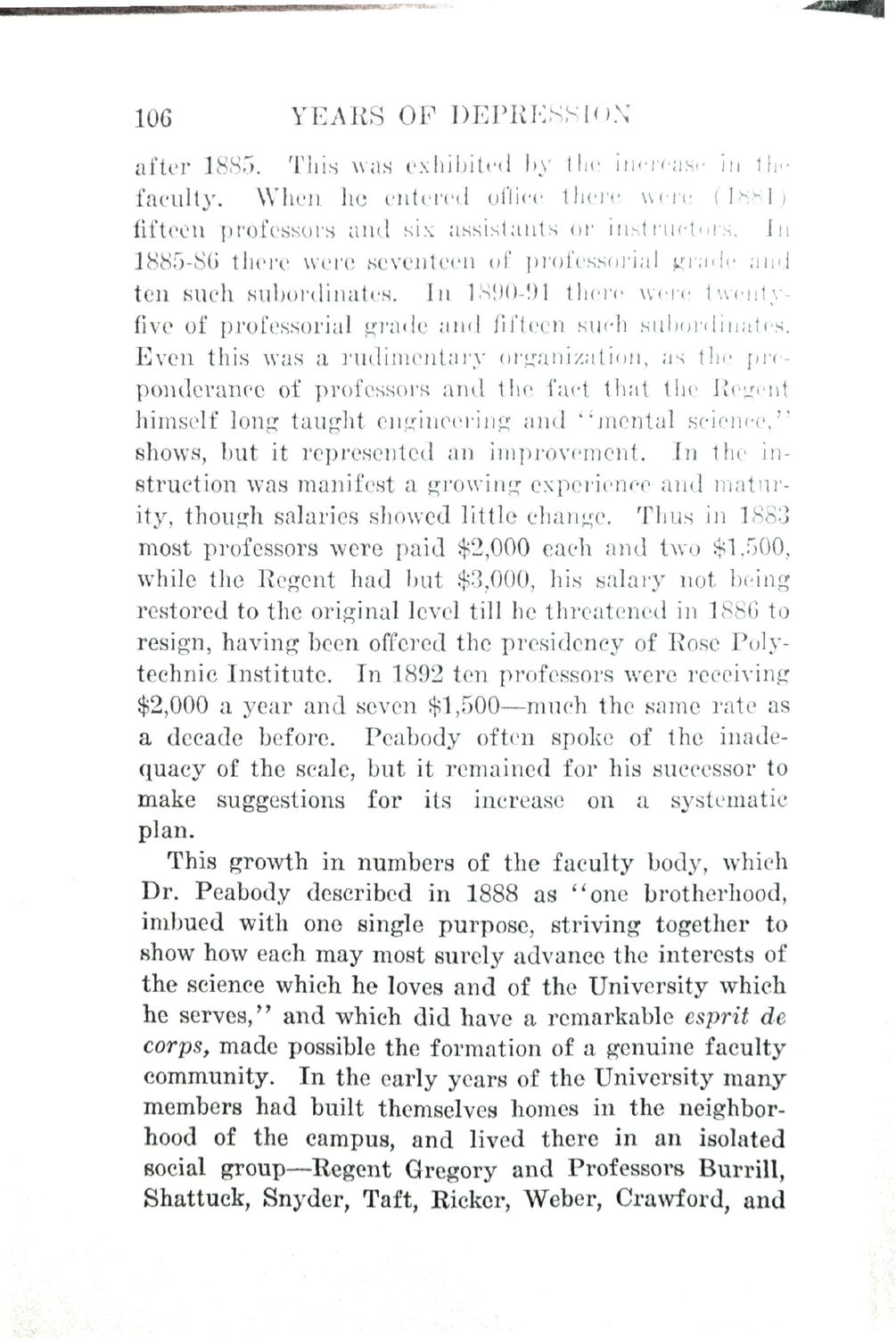| |
| |
Caption: Book - History of the University (Nevins)
This is a reduced-resolution page image for fast online browsing.

EXTRACTED TEXT FROM PAGE:
ftp *L 106 YEARS OF DEPRESSION after 1885. This was exhibited by the increase in the faculty. When he entered office there were (1881) fifteen professors and six assistants or instructors. In 1885-86 there were seventeen of professorial grade and ten such subordinates. In 1890-91 there were twentyfive of professorial grade and fifteen such subordinates. Even this was a rudimentary organization, as the preponderance of professors and the fact that the Regent himself long taught engineering and "mental science," shows, but it represented an improvement. In the instruction was manifest a growing experience and maturity, though salaries showed little change. Thus in 1883 most professors were paid $2,000 each and two $1,500, while the Regent had but $3,000, his salary not being restored to the original level till he threatened in 1886 to resign, having been offered the presidency of Rose Polytechnic Institute. In 1892 ten professors were receiving $2,000 a year and seven $1,500—much the same rate as a decade before. Peabody often spoke of the inadequacy of the scale, but it remained for his successor to make suggestions for its increase on a systematic plan. This growth in numbers of the faculty body, which Dr. Peabody described in 1888 as "one brotherhood, imbued with one single purpose, striving together to show how each may most surely advance the interests of the Science which he loves and of the University which he serves," and which did have a remarkable esprit de corps, made possible the formation of a genuine faculty community, pin the early years of the University many members had built themselves homes in the neighborhood of the campus, and lived there in an isolated social group—Regent Gregory and Professors Burrill, Shattuek, Snyder, Taft, Ricker, Weber, Crawford, and
| |